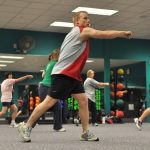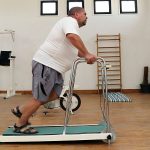
Developing lean muscle mass is important for everyone — it can keep you active and independent throughout your life. But to maximize the benefits of strength training, make sure you’re not making these common mistakes. Mistake number 1: Letting momentum drive your workout. If you power through repetitions at a rapid clip, chances are that you’re using momentum rather than controlled muscle movement to do those reps. To get the most out of each rep, take two to three seconds to lift the weight and three to four seconds to return to the starting position. Mistake number 2: Not moving through a complete range of motion. You’re shortchanging yourself if you’re also rushing through reps without carefully moving from your starting position to a full extension, no matter what the exercise. If you’re unable to do this, chances are you’re lifting too heavy a weight for your current ability. Mistake number 3: Not lifting enough weight. Some women still incorrectly believe that they’ll develop manly muscle mass if they lift more than a few pounds. But female hormones typically won’t allow that to happen. To get the benefits of strength training, you have to challenge yourself, and that means lifting the most weight you can while still maintaining proper form. Mistake number 4: Changing your routine too often. This can actually set you back because… read on >





































